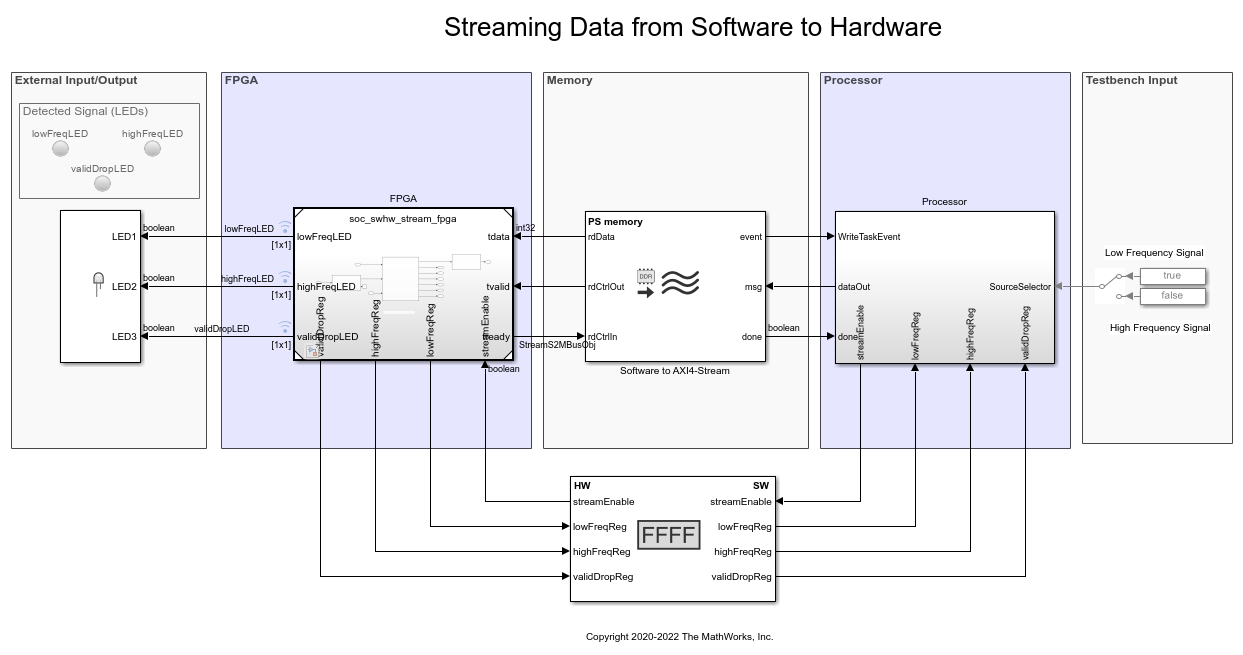Stream Write
Stream data from processor algorithms to shared memory
Libraries:
SoC Blockset /
Processor I/O
Description
The Stream Write block streams data from your processor algorithm to shared
memory in the Memory Channel block.
The Stream Write block has an internal counter that keeps track of the number
of empty buffers in the shared memory. After a successful read from memory, the memory sends a
done signal to the Stream Write block. Then, the block increments the counter,
asserting that a buffer is available in the memory. A write transaction is successful if at
least one buffer is available for writing. The Stream Write block sends a
status of True back to the software. You can use this status signal to
perform actions such as counting dropped frames or issuing rewrite requests.
In simulation, a timer-driven or event-driven task subsystem contains the Stream
Write block. The data signals from the software algorithm connect to the
Stream Write block. The write transaction is issued as a message to the
Memory channel block. After a read operation from shared memory, the
Memory Channel block notifies the Stream Write block of the
read event via the done signal.
Examples
Ports
Input
Output
Parameters
Extended Capabilities
Version History
Introduced in R2020b
